Try these quick and easy Vietnamese pickled carrots and daikon for that classic pickle crunch! Also known as Đồ chua, these sweet and zesty pickles are the perfect accompaniment to your favourite Vietnamese recipes.
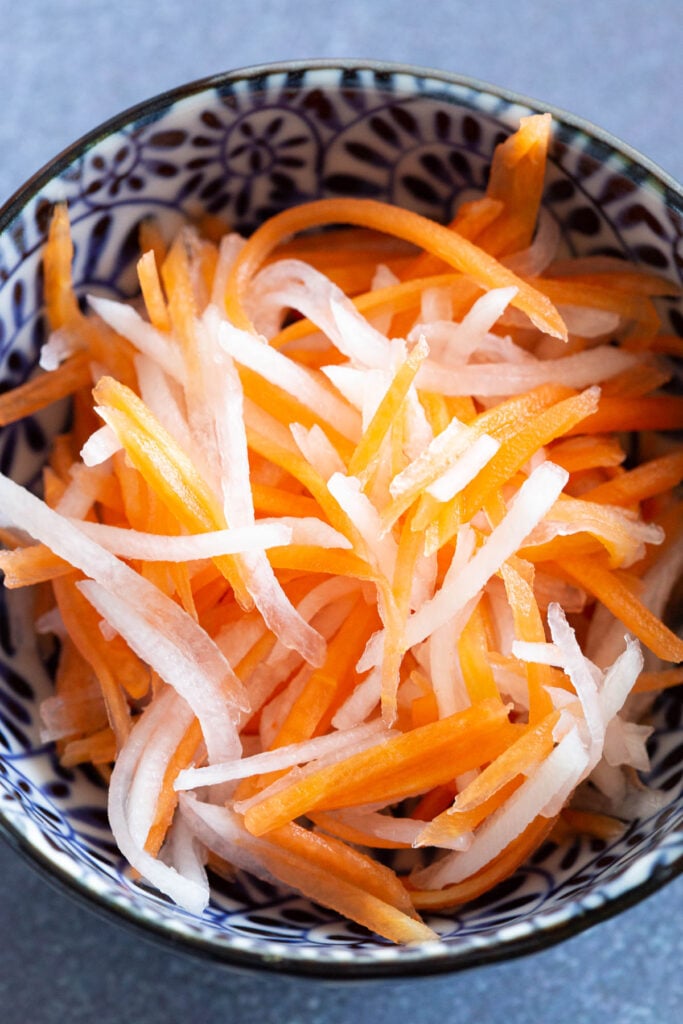
Why We Love This
Vietnamese pickled carrots and daikon are deliciously sweet and savoury. The crispy crunch goes amazingly well with so many of our favourite home cooking recipes.
You can whip them up in minutes and eat them straight away, although they’re even better if you can make them a day or two in advance.
This easy pickle recipe is for a deliberately small amount so you can use it up quickly. Feel free to batch the recipe to make a bigger amount and share with friends or family.
Related: Korean Pickled Garlic / Korean Pickled Onions / Japanese Takuan (Pickled Radish)
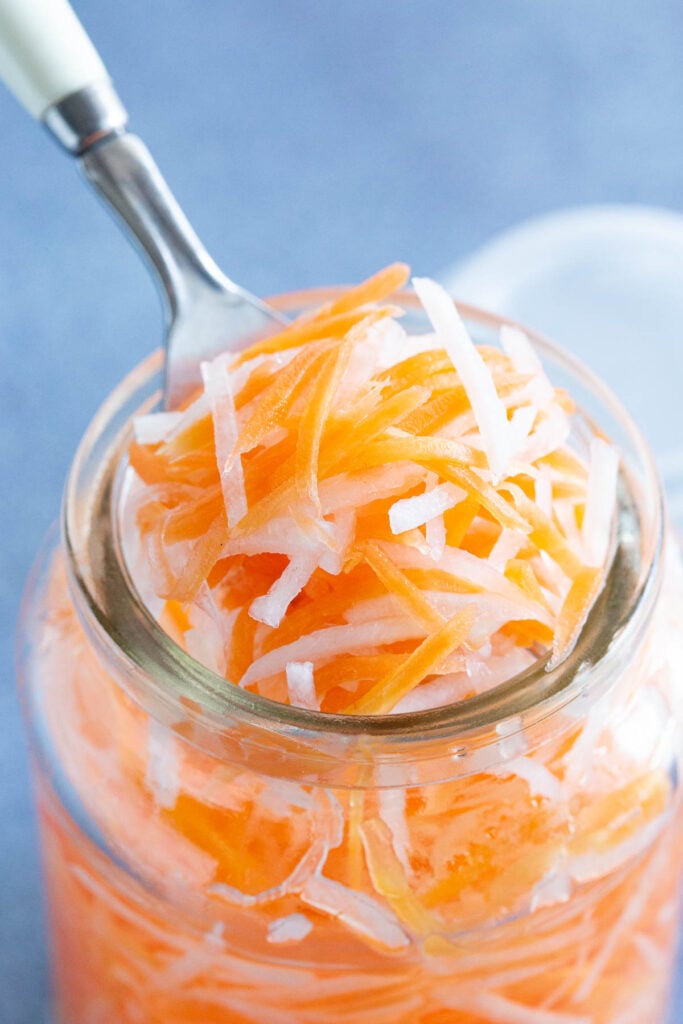
What are Vietnamese Pickled Carrots & Daikon?
Đồ chua means generic pickle in Vietnamese. While the name can refer to other types of Vietnamese pickles, in Vietnam it’s most commonly associated with pickled daikon, with carrots sometimes added for colour.
The fine slivers or julienne slices of carrot and daikon are first soaked in salted water to remove the earthy aroma of the daikon and preserve the colour and crunch of the carrot. Then they’re packed in a jar and covered with a pickling solution of vinegar, water and sugar.
These pickled veggies are what you usually find in banh mi sandwiches, banh xeo crepes, bun cha gio (noodle salad with crispy spring rolls) or bun thit nuong (pork and noodles). You can even use them to add texture to a batch of nuoc mam dipping sauce with fish sauce, garlic and lime.
Vietnamese style daikon pickles are fairly similar to a version of Japanese pickled carrot and daikon known as namasu, which is usually eaten as part of osechi ryori (New Years Eve foods).
Hot Tip!
We were given these graters when we were cooking with the awesome ladies from Tra Que Water Wheel village in Hoi An. They are to this day (over 7 years now?), still the best graters we’ve used for getting those long strips for our pickles!
What You’ll Need
- Carrots & Daikon – This recipe uses an equal amount of each, but you can tweak this ratio to your preference. If you can’t find daikon, you can sub with regular radish or just use all carrot for example.
- Sea Salt – It’s not necessary to use special pickling salt (unless you want to of course). We recommend pure sea salt rather than iodised table salt because the additives in table salt can affect the quality and flavour of the pickles.
- Vinegar – We use white vinegar but you can sub with other versions like rice vinegar, apple cider vinegar etc to tweak the flavour. You may need to adjust the amount of vinegar so they don’t become too sour.
- Sugar – Regular white sugar is fine, you can use other sugars if you prefer.
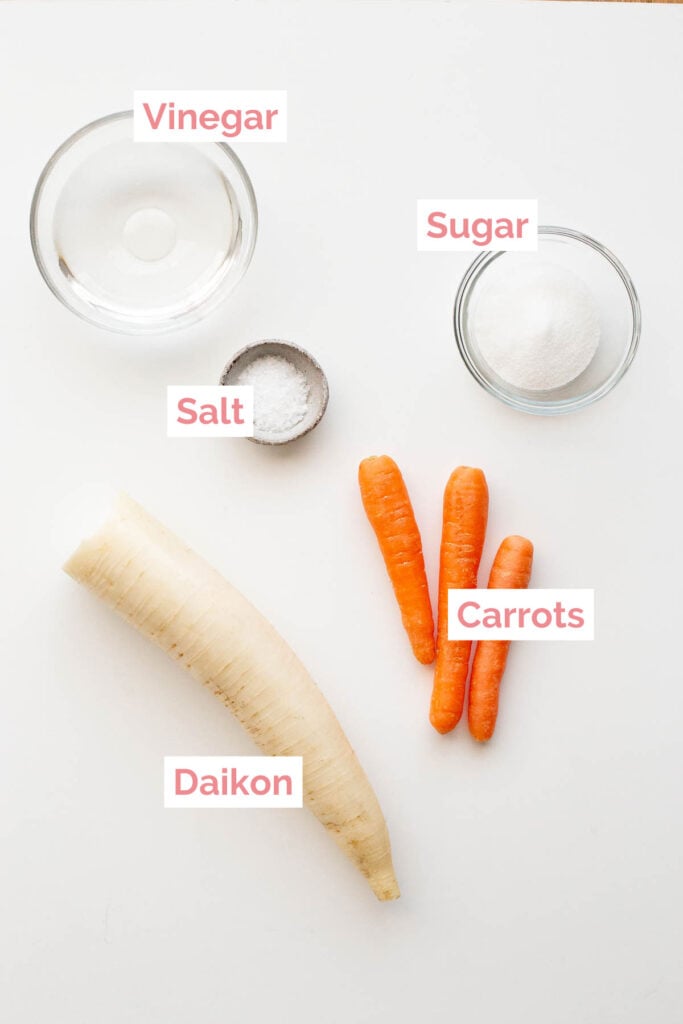
How to make Đồ Chua:
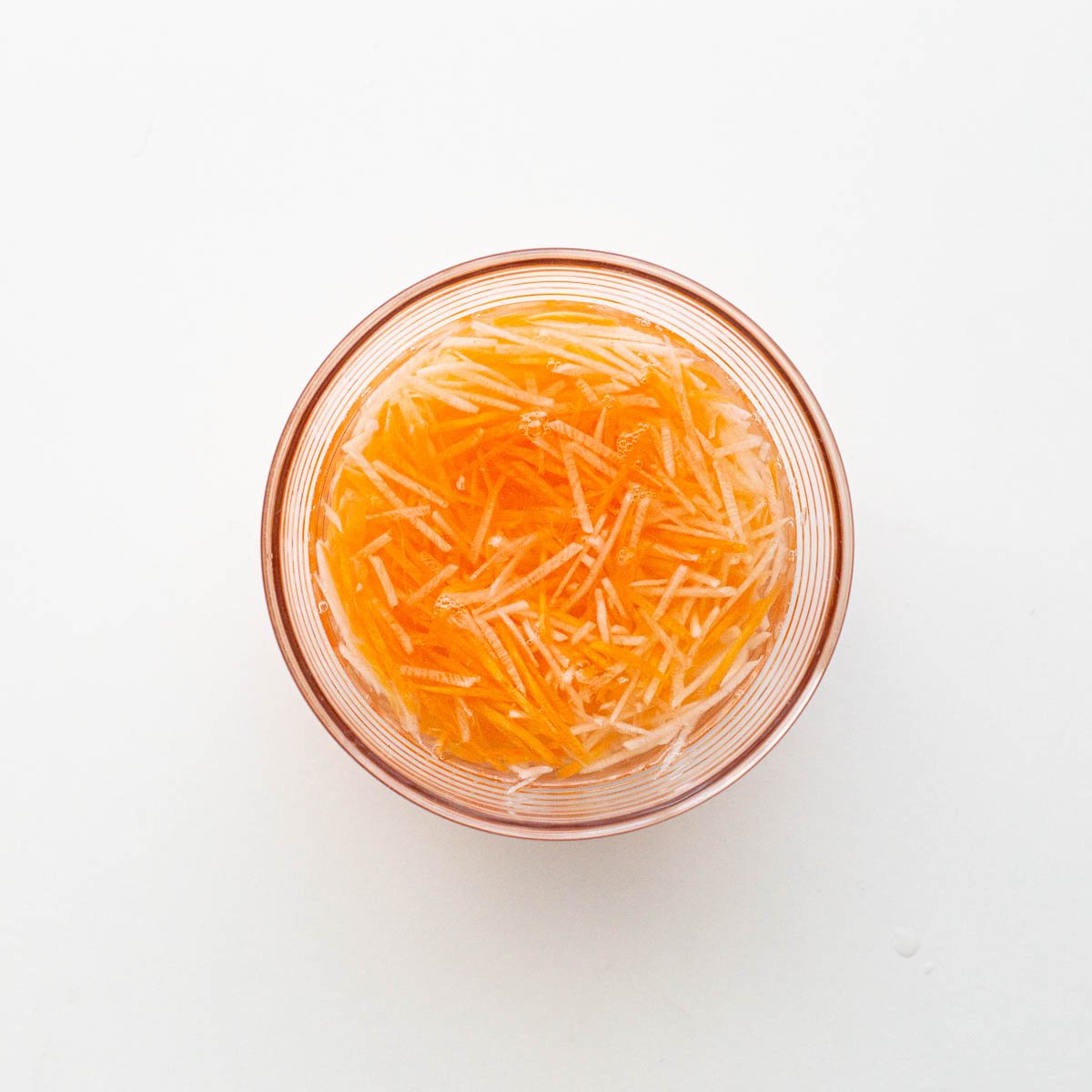
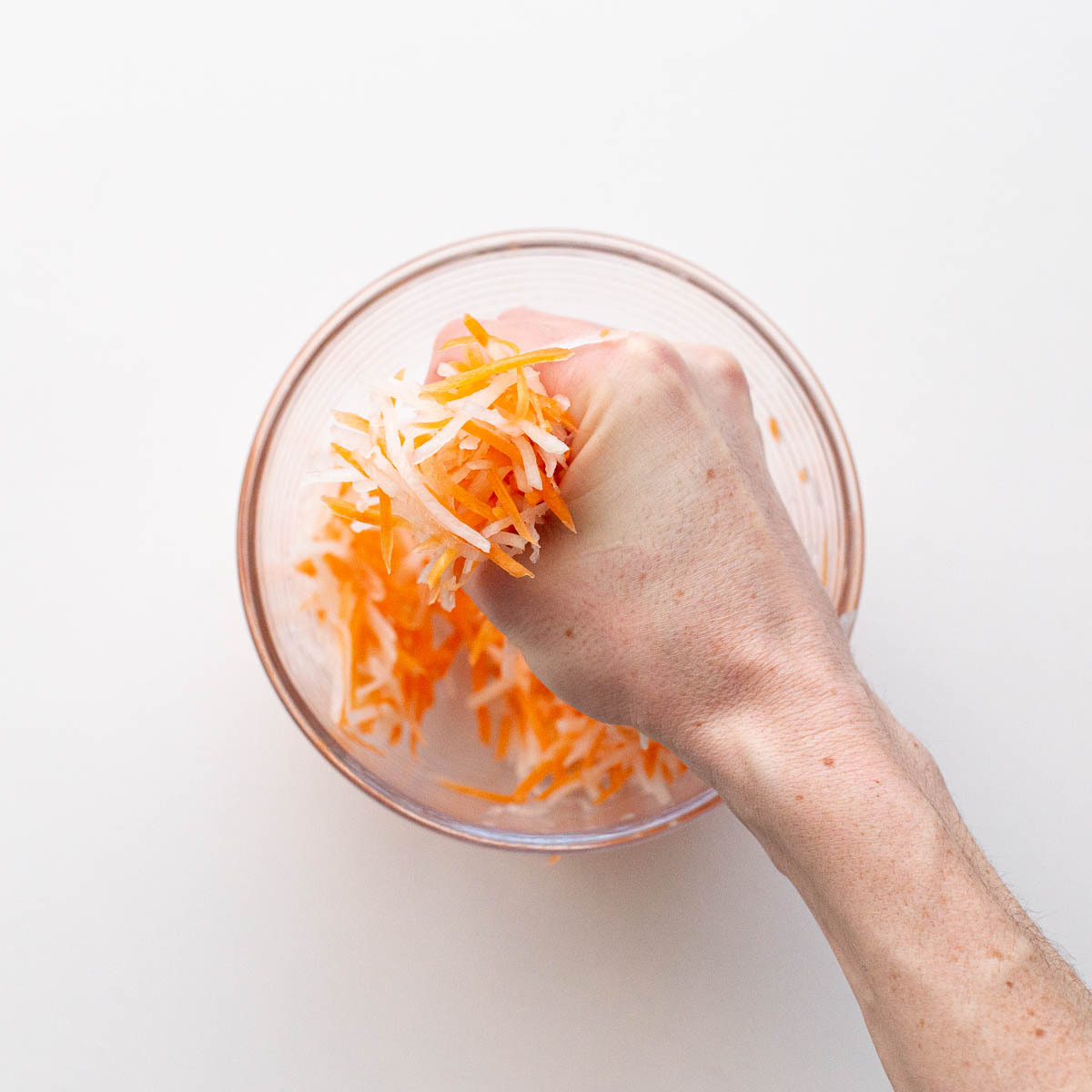
- Soak carrot and daikon in water with salt for 10 minutes then rinse and drain thoroughly.
- Tip: Squeeze them in your hand in small batches to remove even more liquid.
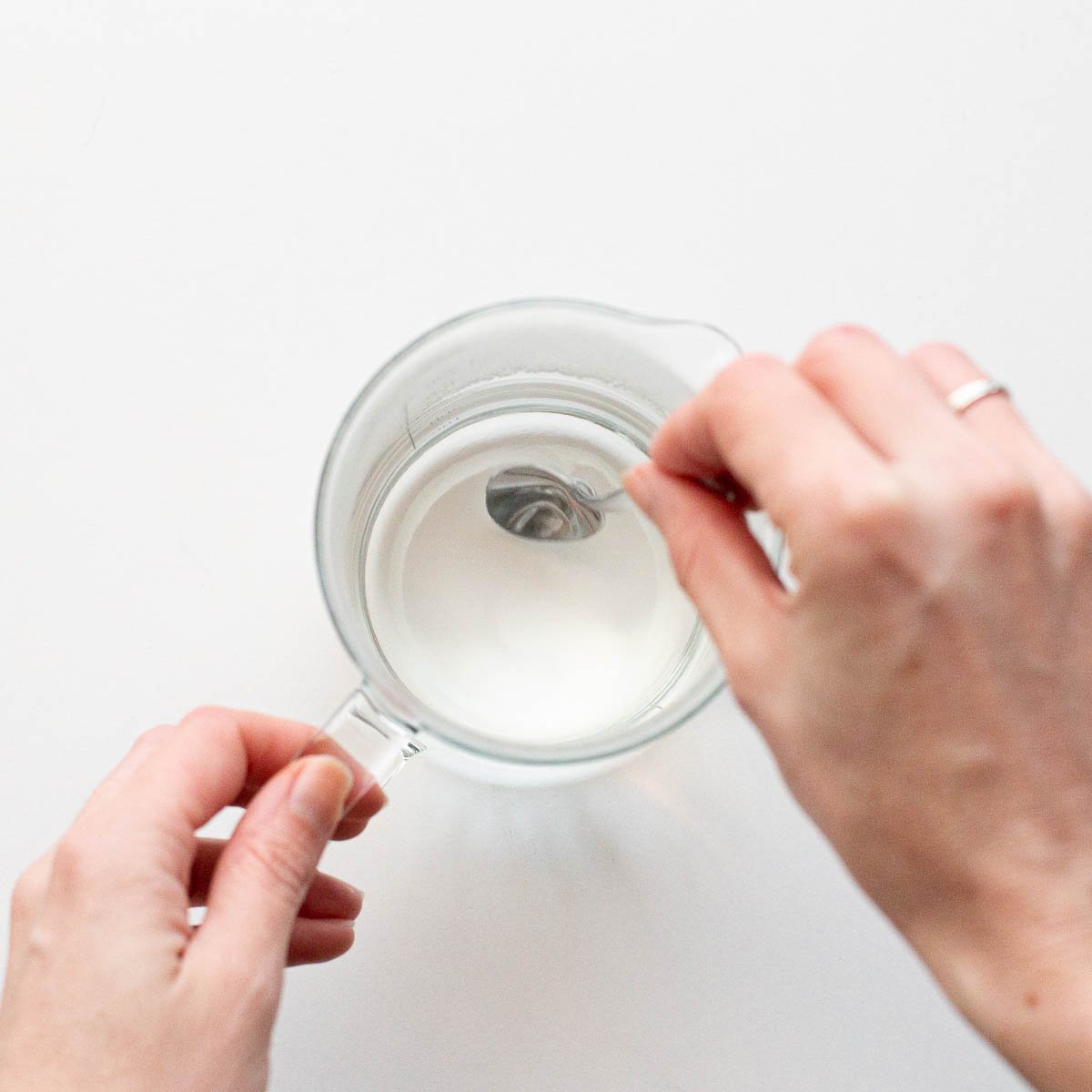
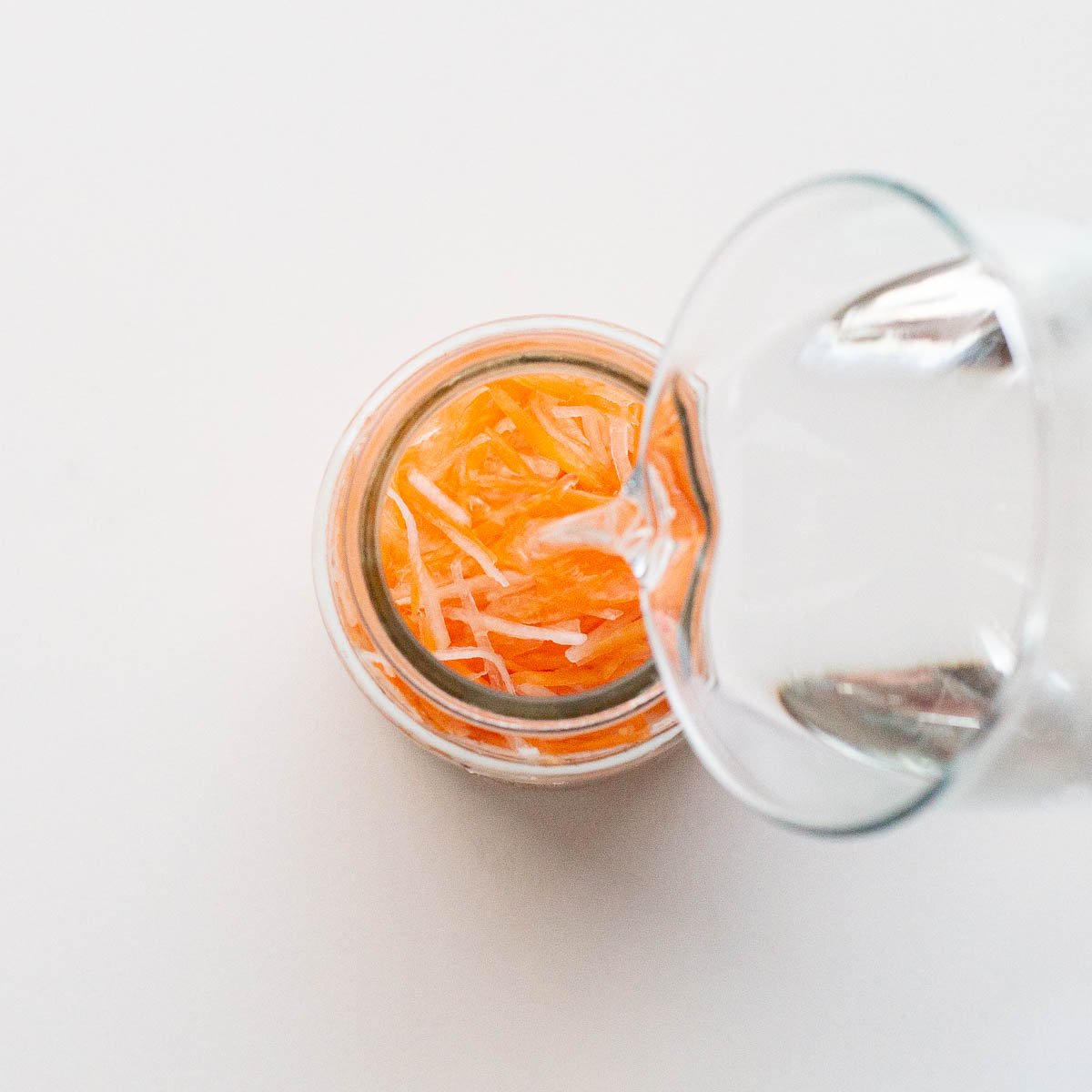
- Add boiling water to sugar in a small jug and mix until dissolved, then add in the vinegar.
- Transfer the carrot and daikon into a sterilised jar (again, squeeze out any extra water as you go). Lightly press it all down, then pour over the pickle solution until it’s covered well. Give it a quick mix and push everything below the surface. Seal tight and allow to cool down, then pop in the fridge. Use within the month.
Wandercook’s Tips
- Slicing – The fastest, easiest way is to use a mandolin slicer or handheld grater. Otherwise, slice the carrots and daikon into thin julienne slices or batons. Don’t stress, it doesn’t matter whether you slice them thicker or thinner!
- Soaking – Soaking in salted water helps remove the intense aroma (read: stinkiness!) from the daikon and will also help to crispen up the veggies.
- Pickling Liquid – Be careful handling the hot liquid, and keep your face away once you’ve added the vinegar to avoid pungent fumes.
- Pack Tightly – Pack the veggies tightly in the jar and try to keep them all below the surface of the pickling liquid to preserve them for longer.
- Storage – Always store your jar of quick pickles in the fridge, where they should last for around a month. They may sometimes last longer, but always use your best judgement and if they look bad or smell too sour, throw them out.
FAQs
You don’t need to use special canning jars for this recipe. You can use repurposed glass jars as long as they are clean and preferably sterilised.
As “quick” or “instant” pickled vegetables, they’re meant to be stored in the fridge. They aren’t shelf stable and are not suitable for storing at room temperature.
Alongside the more traditional Vietnamese banh mi or noodle bowls, they also pair perfectly with sushi bowls or Korean bibimbap and even hot dogs. Try them alongside cooked meats like teriyaki chicken or shogayaki ginger pork.
For a cross cultural BBQ, serve them with cevapi sausages, potato bake and wafu salad. Serve them as a small side dish anytime you’d normally turn towards coleslaw or sauerkraut!
They also provide a nice contrast of texture and flavour in a homemade bento box, alongside agedashi tofu, takuan pickles, sushi rice and potato salad.
Variations
- Add Daikon Leaves – Don’t throw away the leaves and stems from the daikon radish if you’re lucky enough to get your hands on them. Wash, chop and add them right in with the quick pickle!
- Leftover Daikon? – Try making Korean radish salad (musaengchae), or see our amazing daikon recipes for more ideas to use it up!
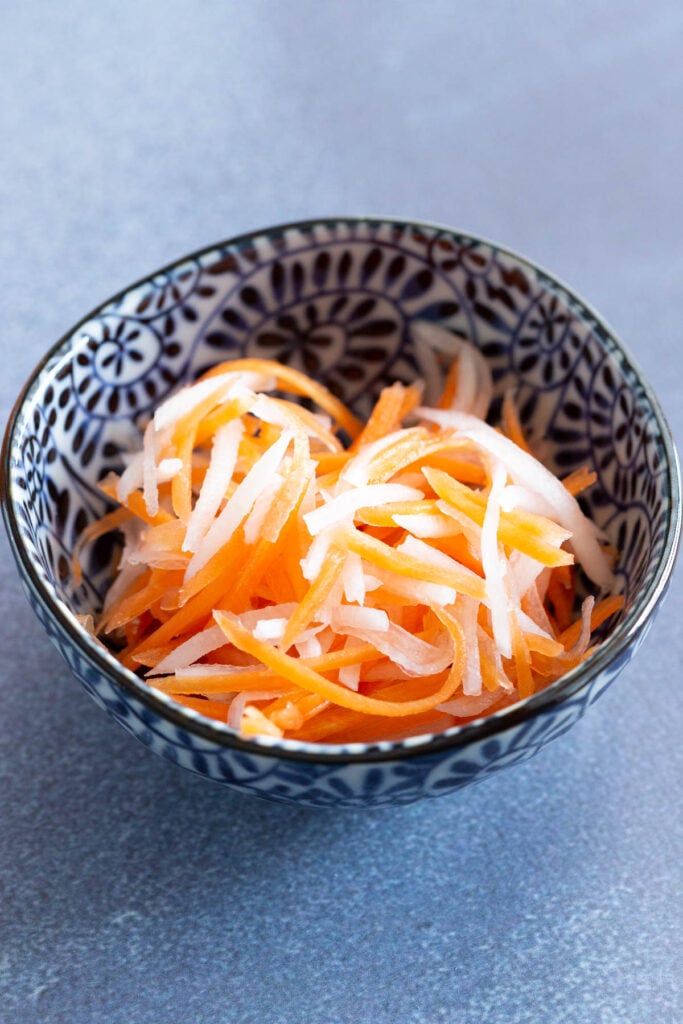
Try these fun and delicious recipes next:
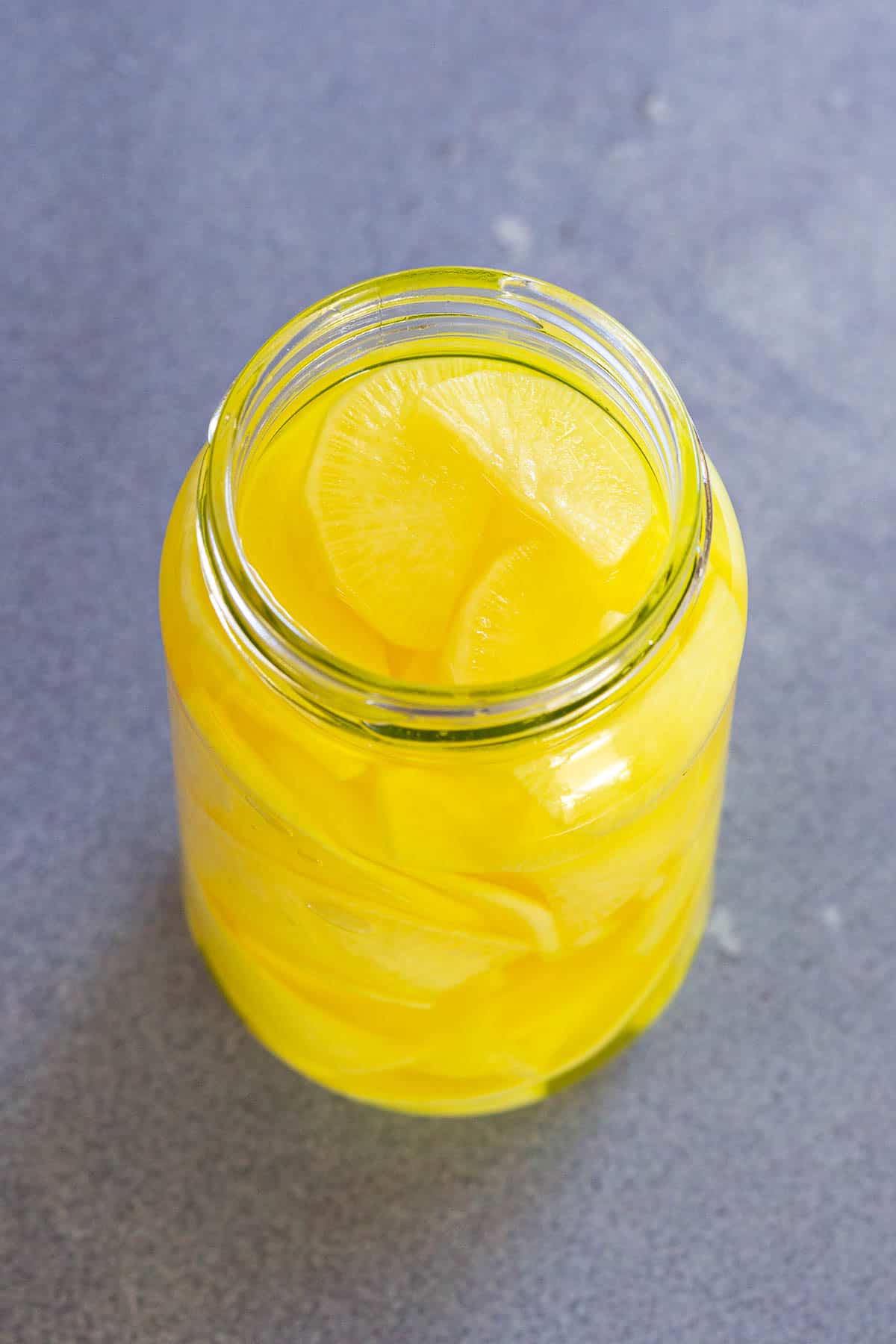
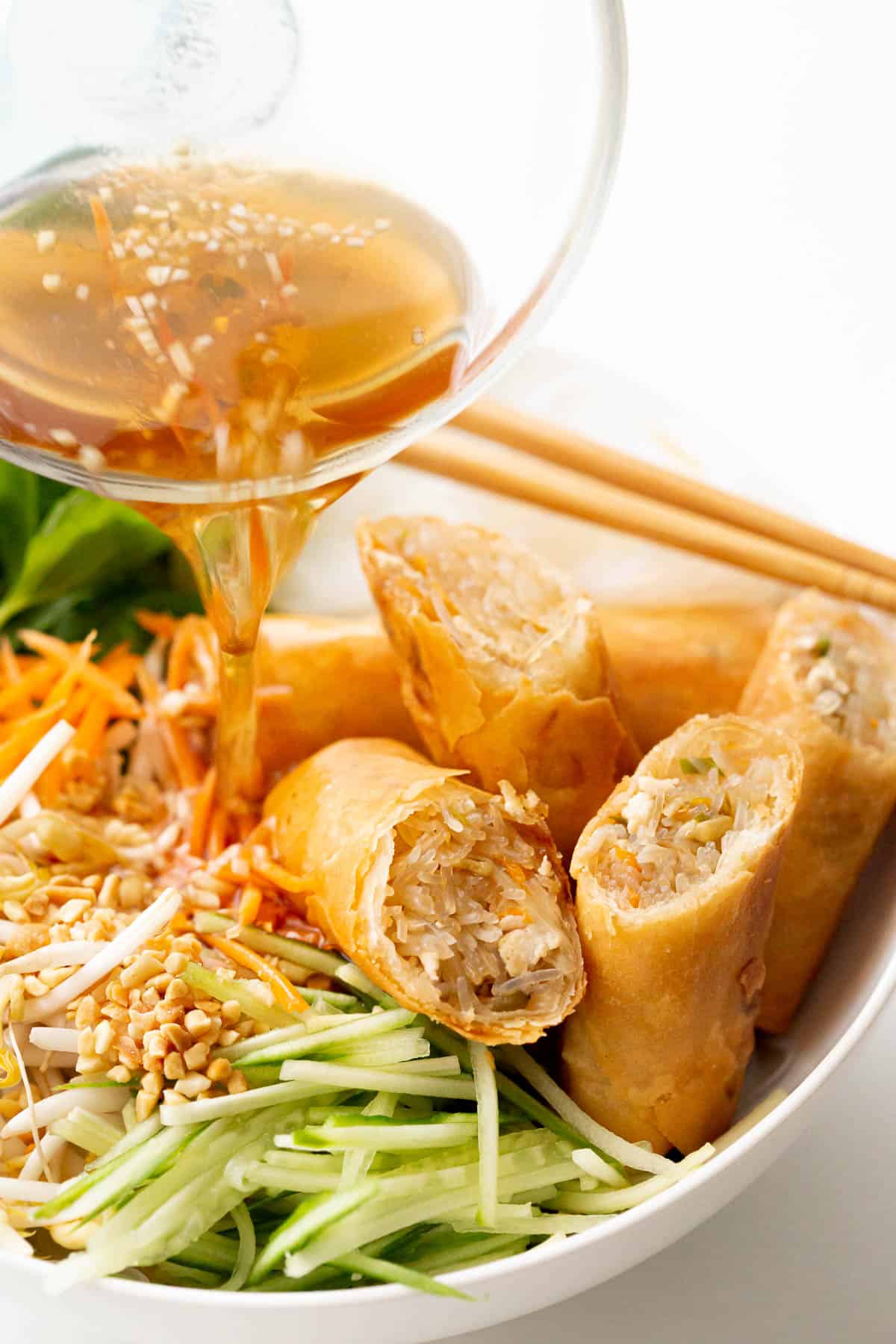
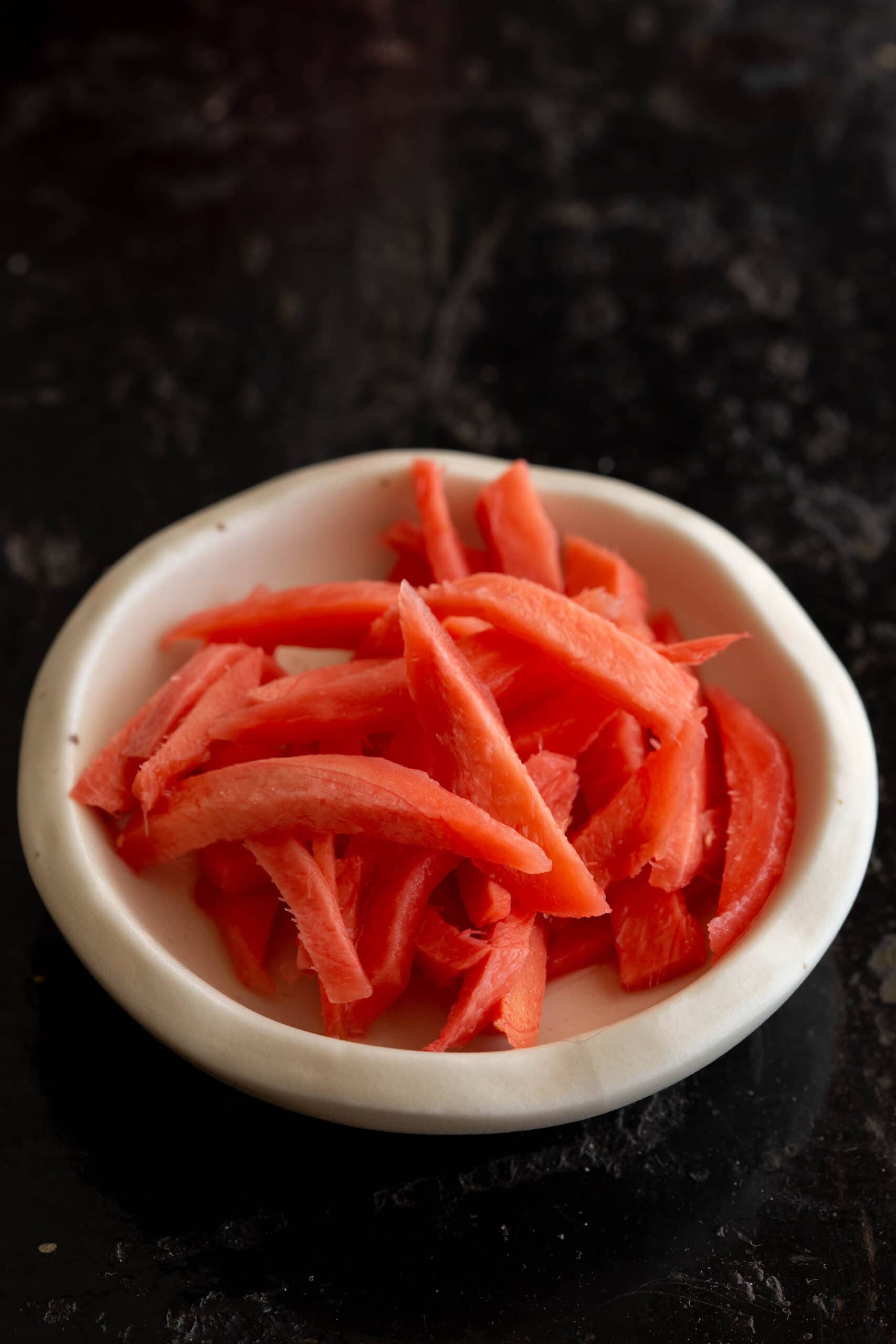
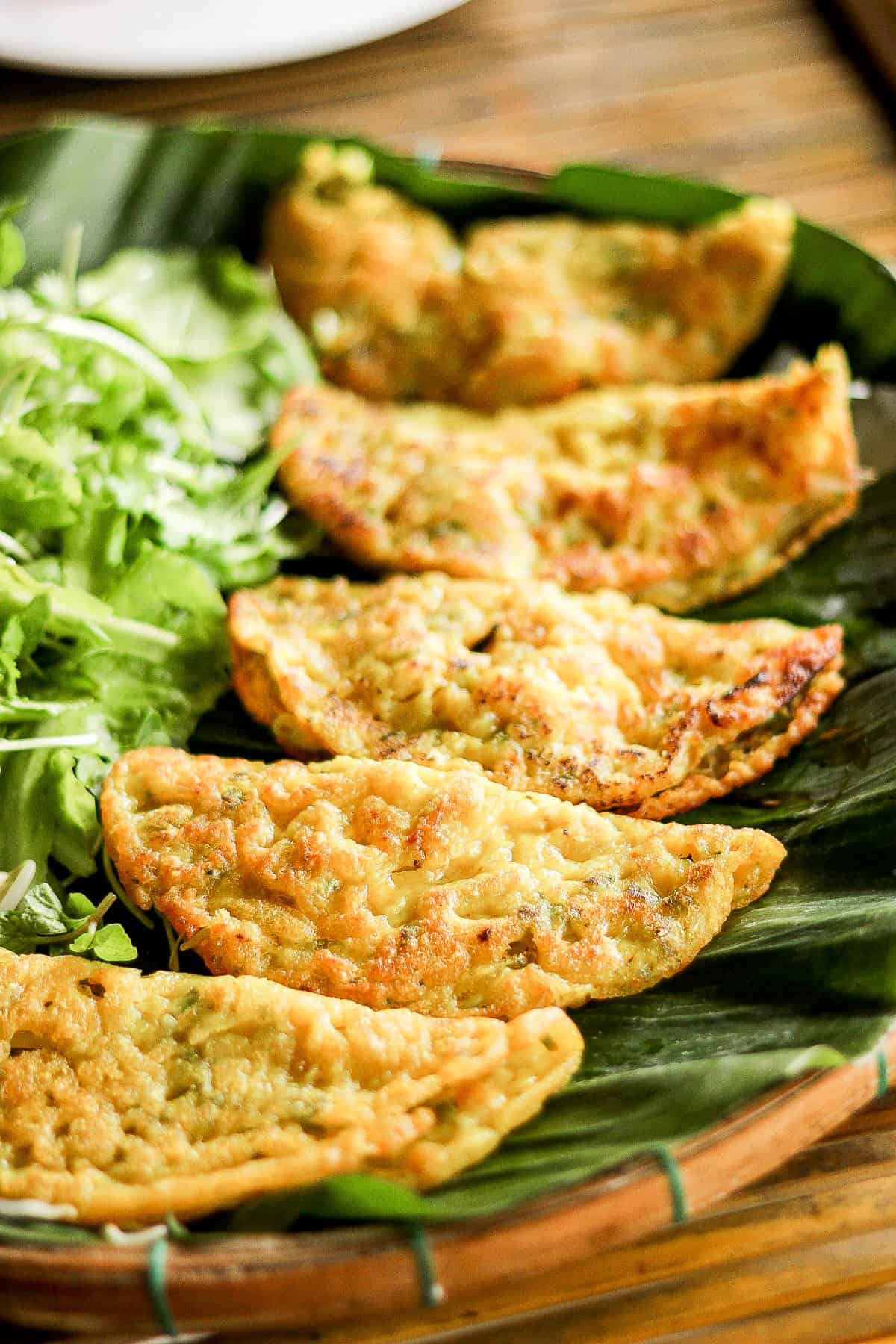
★ Did you make this recipe? Please leave a comment and star rating below!
Equipment
Ingredients
- 1 ½ cups carrot grated (peeling optional)
- 1 ½ cups daikon radish peeled and grated (around ⅓ of a daikon radish)
- 2 cups water for soaking, room temperature
- ½ tbsp sea salt NOT iodised table salt
- ¾ cup vinegar
- ½ cup boiling water for pickling solution
- ¼ cup sugar
Instructions
- Soak carrot and daikon in water with salt for 10 minutes then rinse and drain thoroughly. Tip: Squeeze them in your hand in small batches to remove even more liquid.1 ½ cups carrot, 1 ½ cups daikon radish, 2 cups water, ½ tbsp sea salt
- Add boiling water to sugar in a small jug and mix until dissolved, then add in the vinegar.½ cup boiling water, ¼ cup sugar, ¾ cup vinegar
- Transfer the carrot and daikon into a sterilised jar (again, squeeze out any extra water as you go). Lightly press it all down, then pour over the pickle solution until it’s covered well. Give it a quick mix and push everything below the surface. Seal tight and allow to cool down, then pop in the fridge. Use within the month.
Recipe Notes
- Slicing – The fastest, easiest way is to use a mandolin slicer or handheld grater. Otherwise, slice the carrots and daikon into thin julienne slices or batons. Don’t stress, it doesn’t matter whether you slice them thicker or thinner!
- Soaking – Soaking in salted water helps remove the intense aroma (read: stinkiness!) from the daikon and will also help to crispen up the veggies.
- Pickling Liquid – Be careful handling the hot liquid, and keep your face away once you’ve added the vinegar to avoid pungent fumes.
- Pack Tightly – Pack the veggies tightly in the jar and try to keep them all below the surface of the pickling liquid to preserve them for longer.
- Storage – Always store your jar of quick pickles in the fridge, where they should last for around a month. They may sometimes last longer, but always use your best judgement and if they look bad or smell too sour, throw them out.
- Add Daikon Leaves – Don’t throw away the leaves and stems from the daikon radish if you’re lucky enough to get your hands on them. Wash, chop and add them right in with the quick pickle!
Nutrition
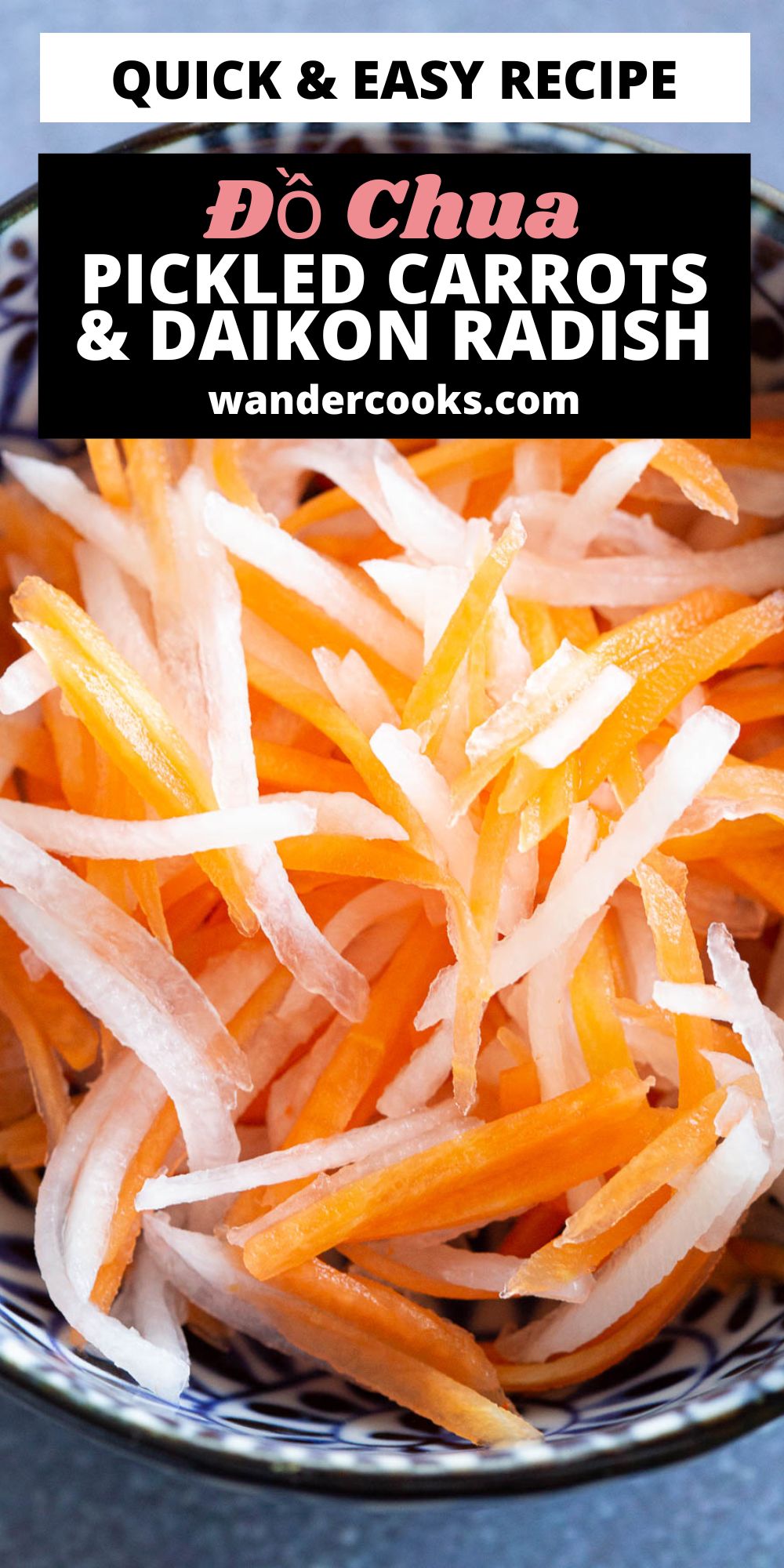


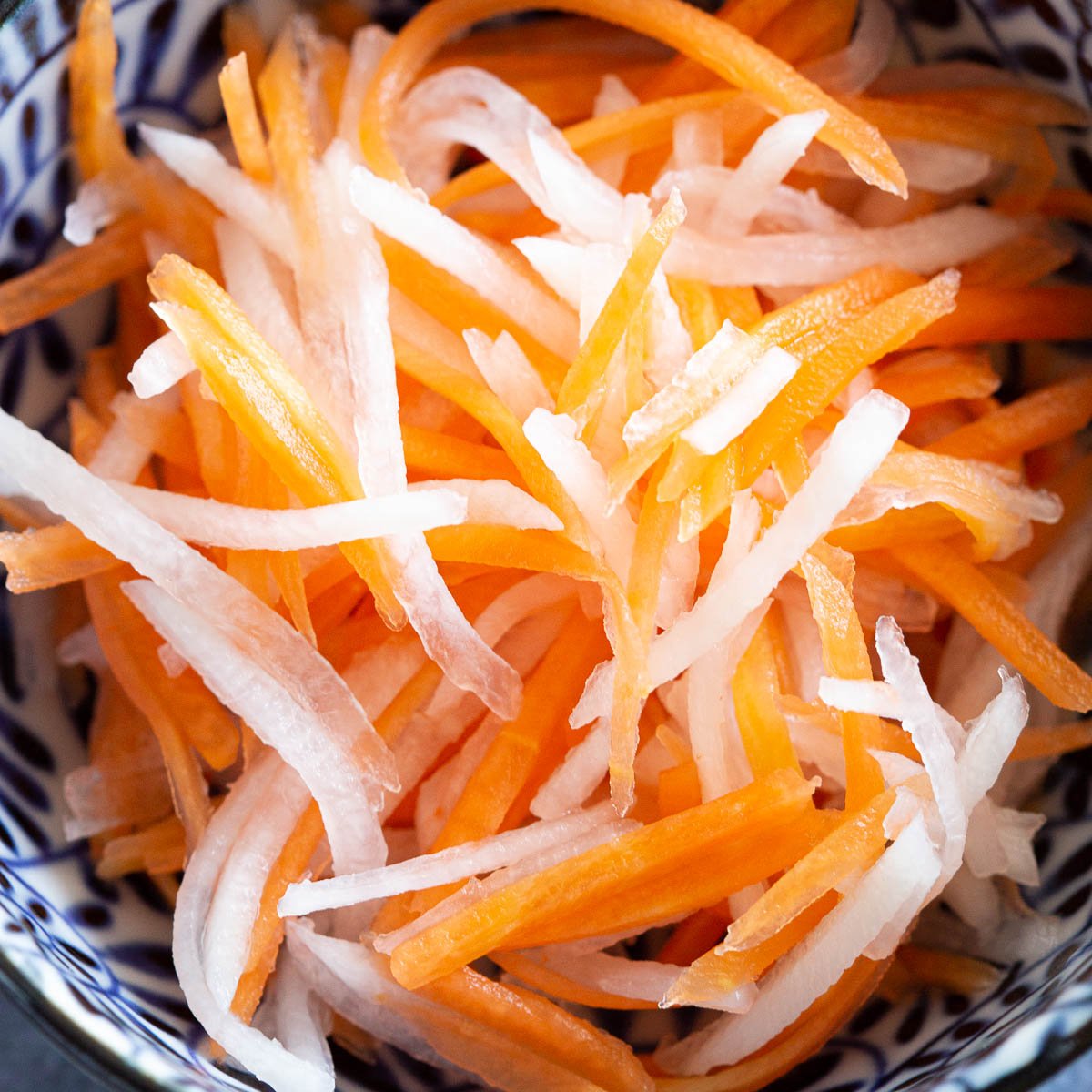


No Comments